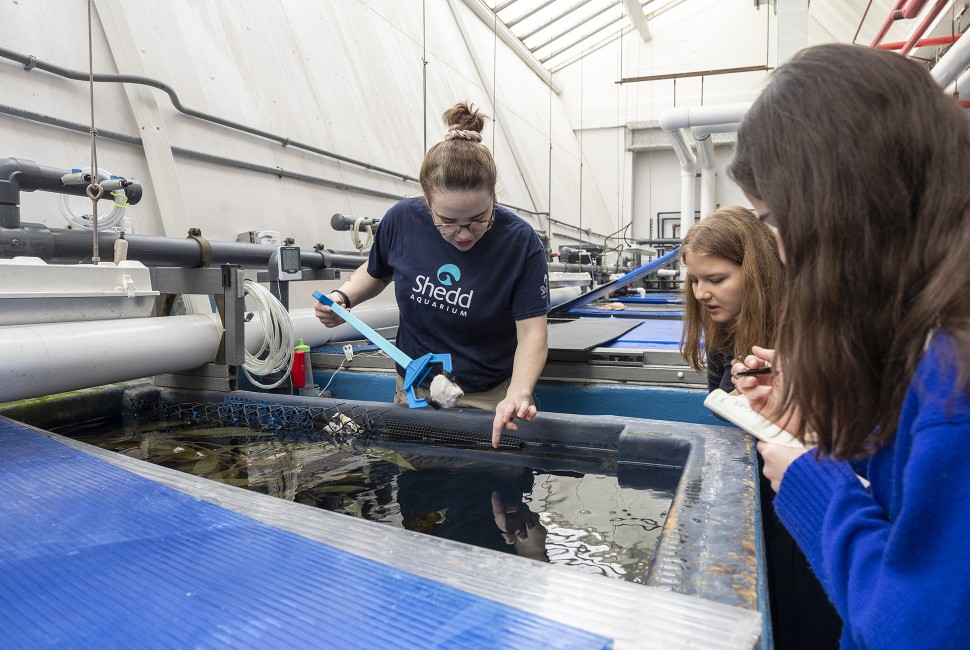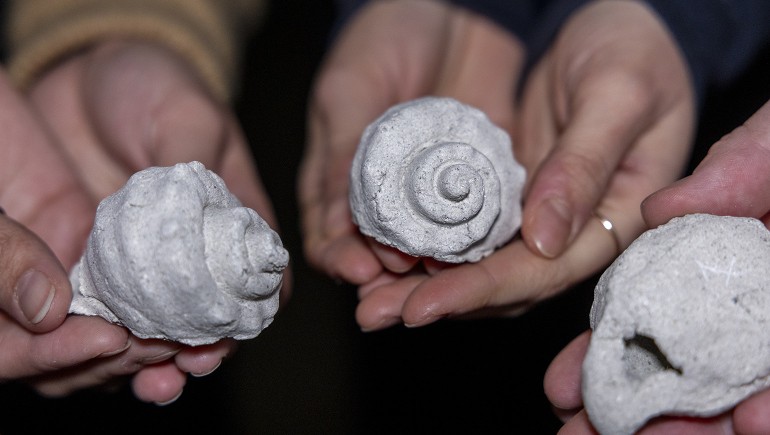A group of Northwestern engineering students recently tested snack-able artificial snails in Miami, where climate change, overfishing and the appetite of some sea life are threatening the small herbivores that work to keep seagrass beds and coral reefs clean.
Queen conch, an important food source for numerous marine animals which grow in healthy coral reefs and seagrass beds, are listed as threatened under the U.S. Endangered Species Act due to overfishing, predation and habitat loss from climate change. Natural processes, including predation, make conch recovery challenging. Juvenile conch are particularly vulnerable to predators such as turtles, sharks and rays due to their relatively weaker and thinner shells.
By using the artificial shells in the field, the team hoped to identify areas with less predation and better inform strategies for restoration and conservation. The students worked with a Shedd Aquarium scientist to design an artificial snail and tested it to explore the relationship between habitat features and predation during the Miami trip.
“In areas with more seagrass, there’s much less predation,” Weinberg senior Hannah Levin said. “We saw that our shells could be used as a tool for evaluating different habitats.”
For the last seven years, Shedd Research Biologist Andrew Kough has enlisted help from Northwestern’s Segal Design Institute to tackle myriad challenges to better conduct field conservation on invertebrates. This year, Kough took the students and their solution — the “GastroPop” — into the Atlantic Ocean.
With Kough’s guidance, students designed a biodegradable shell made from ground oyster shells filled with a restaurant-grade seafood blend, dubbed a “GastroPop” (for gastropod and popsicle), that they used as enrichment for Caribbean spiny lobsters and Japanese spider crabs at Shedd Aquarium.
One lobster spent over an hour chomping on two GastroPops, providing a novel source of physical and mental stimulation without the risk of disease from live animals. Months later, the group of students presented the GastroPop to the same type of lobster in its natural habitat.
From design studio to apartment kitchen
The artificial snail was designed as part of a class at the Segal Design Institute taught by Stacy Benjamin and John Anderson. After using crushed oyster shells and binder pressed into a conch-shaped candle mold, the students blew up a balloon to create a chamber in the shell, then Hajra Malik, a McCormick senior, would bring the shells to her off-campus apartment to bake them at 200 degrees before letting them air dry the rest of the way.
Lachlan Stevens, a McCormick junior, said they concocted a mixture for the inner chamber by researching “niche topics,” like what types of seafood lobsters most enjoy. In the end, after some enrichment activities with the animals at Shedd Aquarium, the team decided on a blend of sodium alginate, dried squid and dried shrimp.



